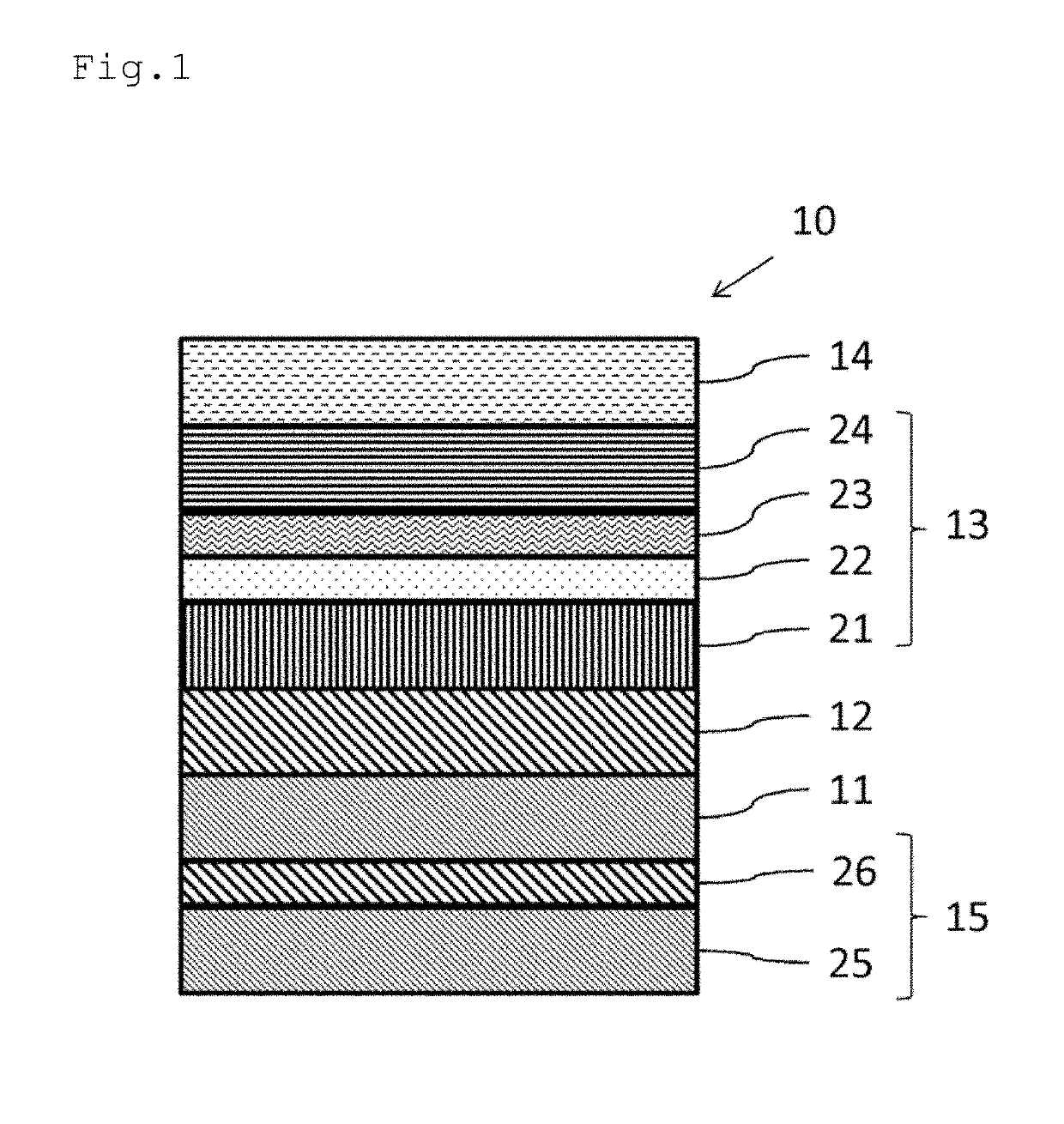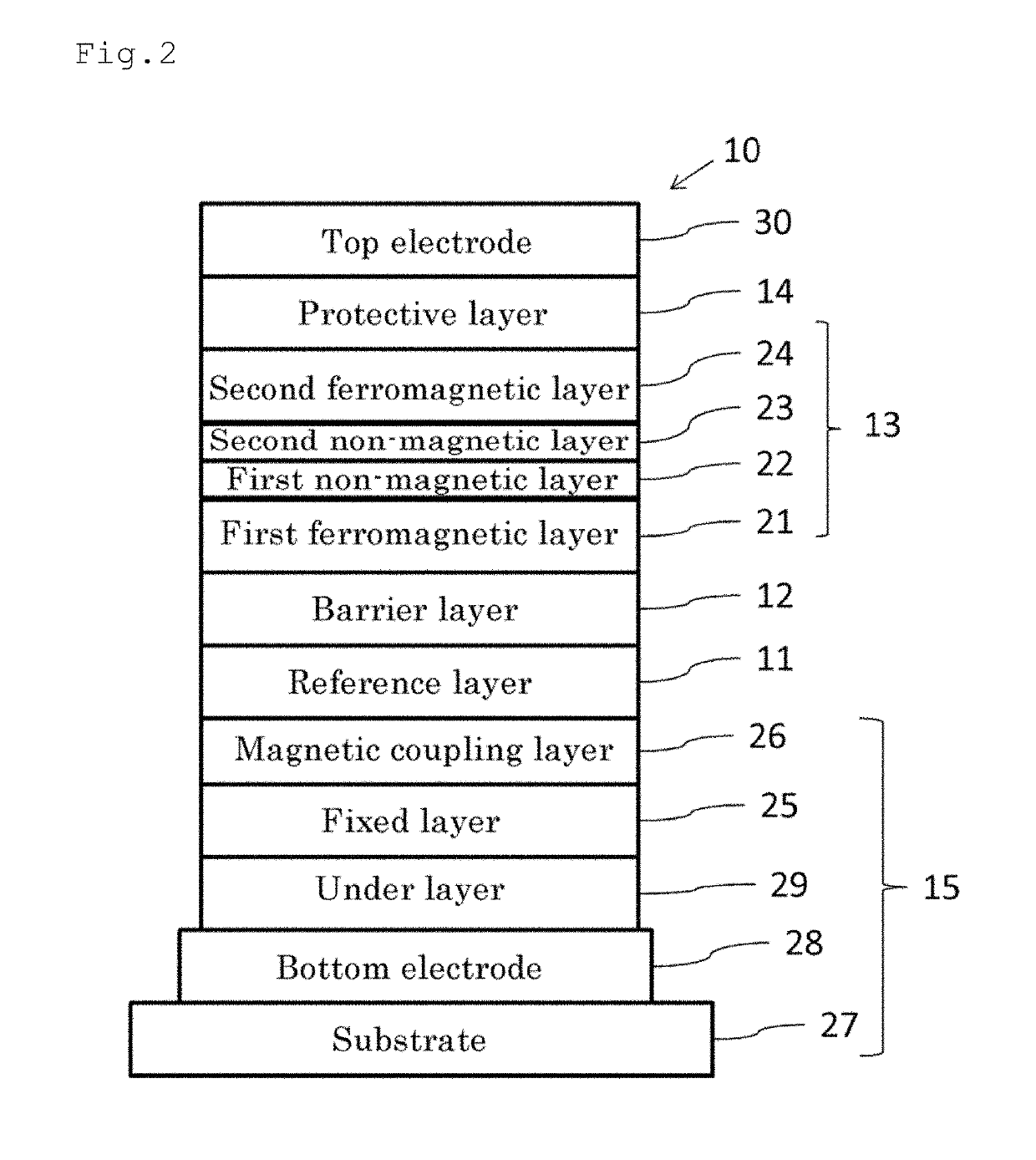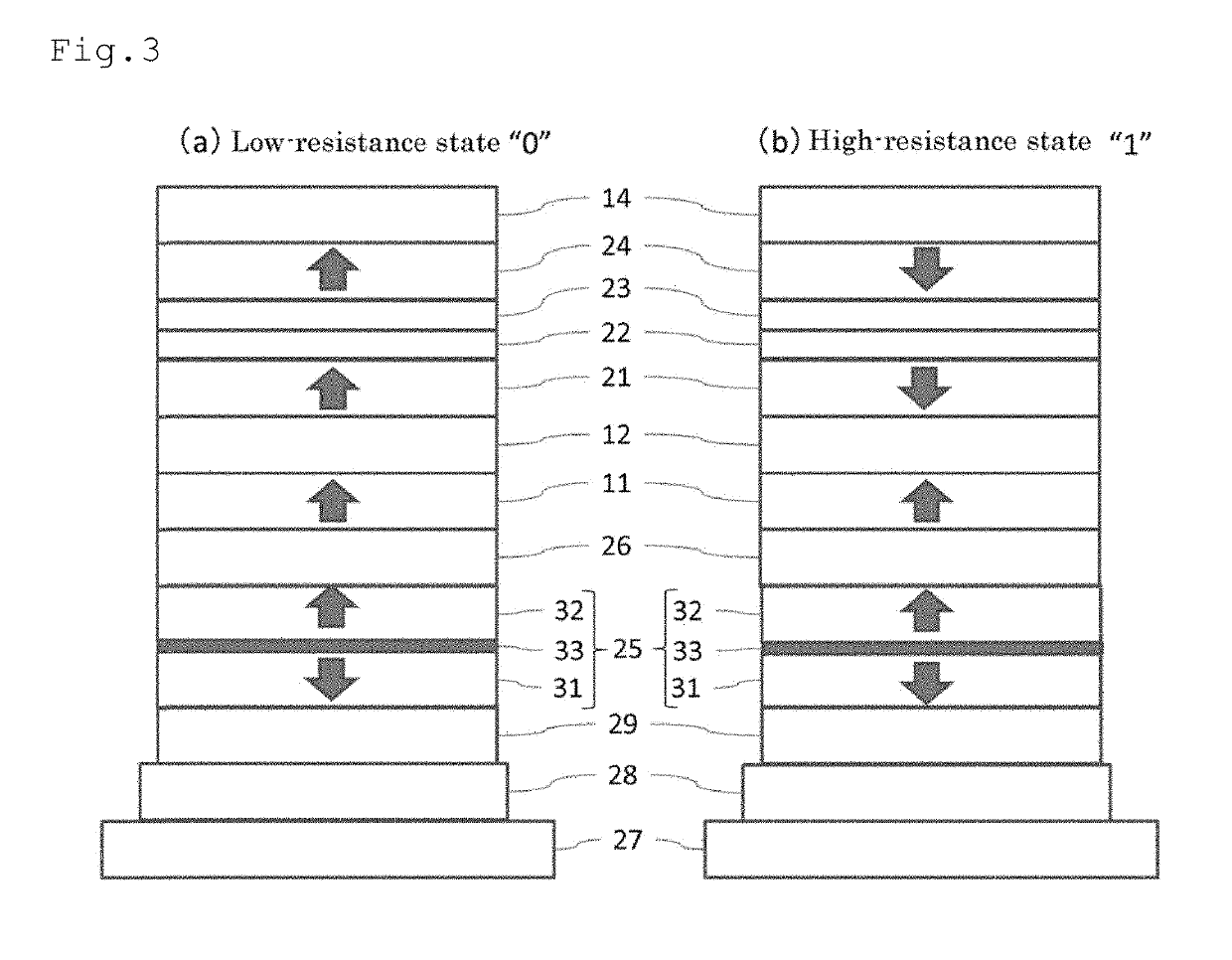Magnetic tunnel junction element and magnetic memory
a tunnel junction element and magnetic memory technology, applied in the direction of digital storage, galvano-magnetic material selection, instruments, etc., can solve the problems of large atomic weight of materials and easy damage of recording layers, and achieve high thermal stability, reduce power consumption, and increase density
- Summary
- Abstract
- Description
- Claims
- Application Information
AI Technical Summary
Benefits of technology
Problems solved by technology
Method used
Image
Examples
example 1
[0085]The magnetic property of a magnetic tunnel junction element 10 was measured with a thickness of a first non-magnetic layer 22 varied. As shown in FIG. 7, in the magnetic tunnel junction element 10 used for the measurement, a reference layer 11 has a thickness of 1 nm and is made of CoFeB, a barrier layer 12 has a thickness of 1.3 nm and is made of MgO, a first ferromagnetic layer 21 has a thickness of 1.4 nm and is made of CoFeB, the first non-magnetic layer 22 is made of MgO, a second non-magnetic layer 23 has a thickness of 0.4 nm and is made of Ta, a second ferromagnetic layer 24 has a thickness of 1.0 nm and is made of CoFeB, and a protective layer 14 has a thickness of 1.0 nm and is made of MgO. Furthermore, on a surface of the reference layer 11 opposite to the barrier layer 12, and on a surface of the protective layer 14 opposite to a second ferromagnetic layer 24, an electrode including a Ta layer having a thickness of 5 nm is formed, respectively. Note here that each ...
example 2
[0088]The magnetic property of the magnetic tunnel junction element 10 was measured with a thickness of a first non-magnetic layer 22 made of MgO and material and thickness of a second non-magnetic layer 23 varied. As shown in FIG. 9, the magnetic tunnel junction element 10 used for the measurement has a configuration in which a bottom electrode layer 28 including a Ta film having a thickness of 3 nm, a Ru film having a thickness of 20 nm, and a Ta film having a thickness of 3 nm, an under layer 29 having a thickness of 3 nm and made of Pt, a third ferromagnetic layer 31 formed by stacking a Co film having a thickness of 0.5 nm and a Pt film having a thickness of 0.3 nm four times, a third non-magnetic layer 33 formed by stacking a Co film having a thickness of 0.5 nm and a Ru film having a thickness of 0.9 nm, a fourth ferromagnetic layer 32 formed by staking a Co film having a thickness of 0.5 nm and a Pt film having a thickness of 0.3 nm twice, a magnetic coupling layer 26 formed...
example 3
[0096]The magnetic resistance (MR) ratio was measured with a size (diameter) of a magnetic tunnel junction element 10 varied. As shown in FIG. 12(a), the magnetic tunnel junction element 10 used for the measurement has a configuration in which a bottom electrode layer 28 including a Ta film having a thickness of 10 nm, a Ru film having a thickness of 5 nm, and a Ta film having a thickness of 5 nm, an under layer 29 having a thickness of 5 nm and made of Pt, a third ferromagnetic layer 31 formed by stacking a Co film having a thickness of 0.5 nm and a Pt film having a thickness of 0.3 nm four times, a third non-magnetic layer 33 formed by stacking a Co film having a thickness of 0.5 nm and a Ru film having a thickness of 0.9 nm, a fourth ferromagnetic layer 32 formed by staking a Co film having a thickness of 0.5 nm and a Pt film having a thickness of 0.3 nm twice, a magnetic coupling layer 26 formed by stacking a Co film having a thickness of 0.5 nm and a Ta film having a thickness ...
PUM
 Login to View More
Login to View More Abstract
Description
Claims
Application Information
 Login to View More
Login to View More - R&D
- Intellectual Property
- Life Sciences
- Materials
- Tech Scout
- Unparalleled Data Quality
- Higher Quality Content
- 60% Fewer Hallucinations
Browse by: Latest US Patents, China's latest patents, Technical Efficacy Thesaurus, Application Domain, Technology Topic, Popular Technical Reports.
© 2025 PatSnap. All rights reserved.Legal|Privacy policy|Modern Slavery Act Transparency Statement|Sitemap|About US| Contact US: help@patsnap.com



